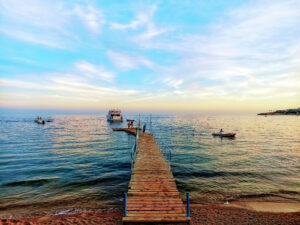Today’s post is from our travel writer on the road, Lisa Eldridge of Girl About the Globe. You can read our interview with her here, and get her advice about travelling solo here (and we recommend that you do)!
Nothing beats the feeling of logging off work and travelling to a dream destination for a well-deserved holiday. But next time you go away, wouldn’t it be great to come back with a feeling that you’ve helped a local?
As visitors, we have a responsibility to make a positive impact on local communities and in our attitude and behaviour towards people’s traditions, living conditions, culture and heritage. You may not think you have any customs, but compared to someone living in the Dominican Republic, you definitely do. It’s about being a sensitive tourist and doing your best to make a better impact on the world.
How you can help
You may not be staying with a local, but there are plenty of other ways to learn about the community—and give something back when you visit another country.
If you are staying in an all-inclusive resort, even small actions such as re-using your towels, turning off the air conditioning and lights when you’re not in the room, and using local transport or walking instead of getting a taxi can all help. Just think: More than 62 million travellers visited Spain in 2014. Imagine if they had all taken these small steps—it would make a truly sizable difference.
Explore outside of your resort for a day, or even an hour or two. Find a local bar or restaurant outside to enjoy a drink or a snack. This puts more money back into the local economy, and is a great way of meeting people from the area, and not just those who work within your hotel.
Buying souvenirs
Bringing a souvenir back from your holiday is second nature and some of us wouldn’t think twice about buying a knock off designer bag to take home, but when you consider what your hard-earned cash may be funding, it may make you think twice.
Checking for guidelines with the Foreign Office on what cannot be brought back into your country, acts as a guide to illegal or protected goods. It’s worth doing the research before you go so you know what to look out for. If you’re heading to any of these countries, here is a handy guide to what you can buy and what you should stay away from.
Spain – Spain is the perfect place to buy leather goods such as handbags, shoes and belts but just make sure you know what animal skin they came from before you buy as some animals can be bred only for this industry. Gifts from Spain could be olive oil, wine, amazing artwork or their handmade espadrilles.
Cape Verde – In Cape Verde most of the produce is imported but you can also find basket weaving which is part of the islands’ heritage, as well as clay figures in the local markets.
Egypt – Bazaars are big here and many of the souvenirs have been mass produced. Ask the shop keeper where it is made or check the bottom for any markings. Papyrus statues and paper are unique to Egypt and buying anything made from this is a way of helping sustain their cultural heritage.
Dominican Republic – Turtles are common here and many are in danger of extinction so avoid anything made from turtle shell and also coral. It is also illegal to take anything made from mahogany out of the country so avoid wooden statues made from this wood.
Mexico – In Mexico you can find souvenirs from endangered species. As tempting as it is to buy a coral necklace, don’t accept anything again made by black coral, sea turtles, exotic plants or butterflies. Look for traditional crafts instead or their famous tequila products.
Fair trade
When choosing food and coffee products, look for fair trade practices. Fair trade is a way of sourcing products from local people to enable them to use their skills to earn a liveable wage without fear of exploitation. It encourages fair treatment and sustainability for farmers and workers within the developing world. It’s a way of creating opportunities for local people who struggle to compete with the multi organisations and industry giants and is a responsible approach to travel and tourism. From cotton and coffee farmers to tribal women crafting unique statues or pieces of jewelry, money that is made is often used for bicycles and new wells to provide water to the village ensuring that the whole community benefits from the partnerships.
Whether you choose to buy from local sellers, dine at restaurants which help the community or donate to a non-profit organisation which offers skills training to people in the neighbourhood, there are several ways to make the most of your trip here and leave a responsible footprint behind.
Happy travels!






